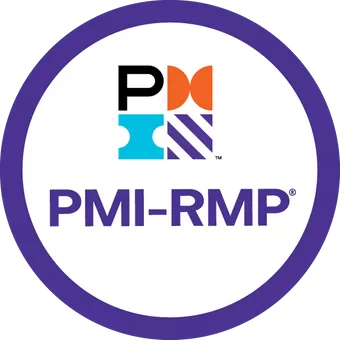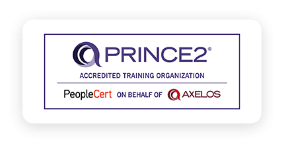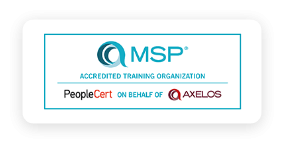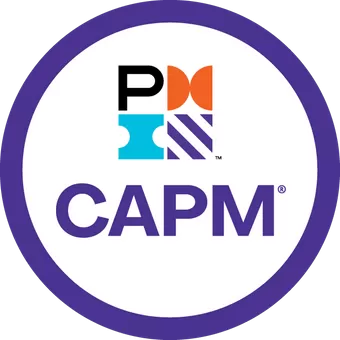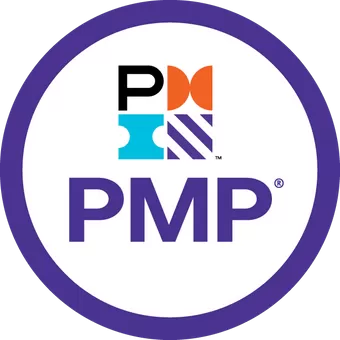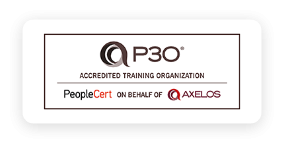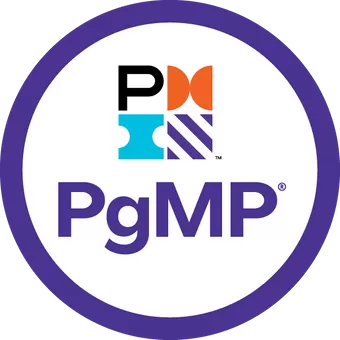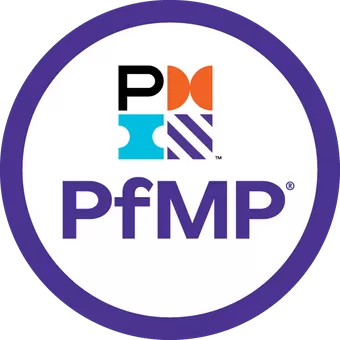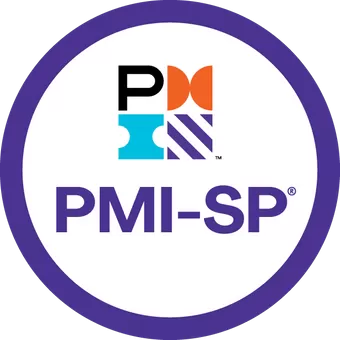
Sprints in Project Management: Guide to Types, Planning, Execution, and Benefits
Written By : Bakkah
25 Apr 2024
In project management, understanding sprints is essential for implementing Agile methodologies effectively. A sprint is a fundamental aspect of Agile frameworks like Scrum, enabling teams to deliver incremental value. During a sprint, specific tasks or features are completed, fostering collaboration, adaptability, and continuous improvement.
This article delves into the definition of sprints, their role in project management, different types of sprints, and how to plan and execute them successfully. Additionally, it explores the Sprint Cycle, compares sprints with scrums, and discusses their significance in project management.
Whether you're new to Agile or looking to refine your practices, our comprehensive guide will equip you with the knowledge and tools needed to succeed. Embrace the sprint mindset and propel your projects towards success in dynamic and fast-paced environments.
Definition of Sprint in Project Management
In project management, a sprint refers to a short, time-boxed period during which a specific set of tasks, goals, or features are completed. Sprints are a core component of agile methodologies such as Scrum, where projects are divided into smaller, manageable iterations.
Typically lasting between one to four weeks, agile sprints provide teams with a focused timeframe to plan, execute, and deliver incremental value to the project. During a sprint, teams collaborate closely, often holding daily stand-up meetings to discuss progress, identify obstacles, and adapt plans as needed.
At the end of each sprint, the team delivers a potentially shippable product increment, allowing for continuous feedback and iteration throughout the project lifecycle.
Types of Sprint in Project Management
In project management, various types of agile sprints can be employed depending on the project's needs and context. That includes development for new features, bug fixing for software defects, design for interface refinement, research for insights, documentation for information organization, and training for skill enhancement, all contributing to iterative delivery and improvement.
Here is a detailed discussion of the common types of sprints in project management:
1. Development Sprints
These are focused on building and implementing new features or functionalities within the project. Development sprints typically involve tasks such as coding, testing, and integrating new components into the existing system.
2. Bug Fixing Sprints
These sprints are dedicated to resolving software defects or issues identified during testing or from user feedback. Bug fixing sprints prioritize addressing and resolving bugs to ensure the stability and quality of the project.
3. Design Sprints
Design sprints are centered around creating or refining the user interface, user experience, or overall design aspects of the project. These sprints involve activities such as prototyping, user testing, and iteration to ensure that the design meets user needs and project requirements.
4. Research Sprints
Research sprints focus on investigating and gathering information to inform decision-making or validate assumptions related to the project. These sprints may involve market research, user interviews, or competitive analysis to gain insights and refine project strategies.
5. Documentation Sprints
Documentation sprints involve creating or updating project documentation such as requirements, user manuals, or technical specifications. These sprints ensure that essential project information is well-documented and accessible to stakeholders, contributing to effective project communication and knowledge sharing.
6. Training Sprints
Training sprints are dedicated to providing education or training to team members on new tools, technologies, or processes relevant to the project. These sprints help enhance team skills and capabilities, enabling them to better contribute to project success.
By utilizing different types of sprints, project managers can effectively manage and prioritize various aspects of the project while maintaining a focus on iterative delivery and continuous improvement.
Sprint in project management example
An example of a sprint in project management could involve a software development team working on an e-commerce platform. Let's say the team decides to have two-week sprints.
During the sprint planning meeting at the beginning of the sprint, the team identifies the tasks and user stories they aim to complete within two weeks. These tasks could include developing a new checkout feature, optimizing the product search functionality, and fixing reported bugs.
Throughout the sprint, team members collaborate daily in stand-up meetings to discuss progress, and any challenges they're facing, and to adjust their plan if necessary. They work on their assigned tasks, continuously integrating and testing their code to ensure it meets quality standards.
At the end of the sprint, the team holds a sprint review meeting where they demonstrate the completed work to stakeholders, showcasing the new checkout feature, improvements to the product search, and the resolution of identified bugs. They also conduct a sprint retrospective to reflect on what went well during the sprint and what could be improved in future sprints.
This iterative process continues as the team moves on to the next sprint, building upon the work completed in previous sprints and continuously delivering value to the project.
How Long is a Sprint in Project Management
The duration of a sprint in project management can vary depending on the specific methodology being employed and the preferences of the project team.
However, sprints typically last between one to four weeks. In many agile project management methodologies such as Scrum, two weeks is a common duration for a sprint. This timeframe strikes a balance between providing enough time to accomplish meaningful work while maintaining a sense of urgency and adaptability.
Longer sprints, such as three or four weeks, may be used in certain contexts, while shorter sprints, like one week, can be employed for projects requiring more frequent iterations or where rapid feedback and adjustments are critical.
Ultimately, the duration of a sprint is determined based on the needs of the project, the nature of the work, and the preferences of the project team.
How to Plan and Execute Agile Sprints
Planning and executing Agile sprints involves refining the backlog, selecting work, holding daily stand-ups, developing tasks, reviewing progress, reflecting on the process, and repeating each sprint to deliver value iteratively.
Here are the key steps for planning and executing Agile sprints:
1. Product Backlog Refinement
Before the sprint planning meeting, the product backlog should be regularly refined to ensure that it contains well-defined, prioritized user stories or tasks.
2. Sprint Planning Meeting
At the beginning of each sprint, the Scrum team holds a sprint planning meeting. During this meeting, the Product Owner presents the highest-priority items from the backlog, and the team collaborates to select the work they can commit to completing during the sprint. Tasks are decomposed, estimates are made, and a sprint goal is established.
3. Daily Stand-up Meetings
Throughout the sprint, the team holds daily stand-up meetings to synchronize their work, discuss progress, and identify any obstacles or impediments. These meetings are time-boxed to 15 minutes and focus on what was done since the last meeting, what will be done next, and any blockers.
4. Development and Collaboration
During the sprint, team members work on their assigned tasks, collaborating as needed to complete the work. The Scrum Master facilitates collaboration and helps remove any impediments that may arise.
5. Sprint Review Meeting
At the end of the sprint, the team holds a sprint review meeting to demonstrate the completed work to stakeholders. The Product Owner verifies that the work meets acceptance criteria, and stakeholders provide feedback. Based on this feedback, the Product Backlog may be adjusted as necessary.
6. Sprint Retrospective Meeting
Following the sprint review, the team conducts a sprint retrospective meeting to reflect on the sprint process and identify opportunities for improvement. This includes discussing what went well, what didn't go well, and action items for the next sprint.
7. Repeat
After the retrospective, the next sprint begins, and the process repeats, with the team selecting new items from the backlog and working towards the sprint goal. By following these steps, Scrum teams can effectively plan and execute Scrum sprints, delivering value to stakeholders collaboratively and iteratively.
Why is Sprint Planning Important?
Sprint planning is a cornerstone of agile project management, ensuring teams begin each iteration with clear objectives and commitments. This process fosters collaboration, alignment, and adaptability, laying the foundation for successful sprints and incremental value delivery.
Here is a breakdown of the role of sprints in project management:
1. Establishing Clarity and Focus
Sprint planning allows the team to define the scope and objectives of the upcoming sprint. By selecting and prioritizing user stories or tasks from the product backlog, the team gains clarity on what needs to be accomplished during the sprint.
This clarity helps focus the team's efforts and ensures everyone is aligned on the sprint goal.
2. Setting Realistic Commitments
During sprint planning, the team collectively estimates the effort required to complete the selected work items. This estimation process helps the team understand the capacity available for the sprint and make realistic commitments regarding what can be accomplished.
Setting achievable goals fosters a sense of accountability and empowers the team to deliver high-quality work within the sprint timeframe.
3. Facilitating Collaboration and Alignment
Sprint planning involves collaboration among team members, including developers, testers, and the product owner. By discussing and clarifying requirements, dependencies, and acceptance criteria, the team ensures everyone has a shared understanding of the work to be done.
This alignment minimizes misunderstandings and reduces the risk of rework or delays during the sprint.
4. Risk Management
During sprint planning, the team identifies potential risks, dependencies, and impediments that may impact the sprint's success. By proactively addressing these challenges and developing mitigation strategies, the team can minimize disruptions and optimize their productivity throughout the sprint.
5. Promoting Transparency and Adaptability
Sprint planning promotes transparency by making the team's intentions and commitments visible to stakeholders. It provides an opportunity for stakeholders to provide feedback, ask questions, and adjust priorities if necessary.
This transparency fosters trust and collaboration between the team and stakeholders, enabling adaptive decision-making and iterative refinement of project goals and requirements.
6. Continuous Improvement
Sprints promote a culture of continuous improvement within the project team. Through sprint retrospectives, teams reflect on their processes, identify areas for improvement, and implement changes in subsequent sprints. This iterative approach to process refinement leads to increased productivity, efficiency, and quality over time.
Overall, sprint planning is essential for laying the foundation for a successful sprint in agile project management by establishing clear objectives, realistic commitments, and effective collaboration among team members. It enables the team to maximize productivity, deliver value incrementally, and respond effectively to changes and uncertainties throughout the project lifecycle.
Can we Implement Sprints in the Waterfall Methodology?
While the waterfall methodology is traditionally characterized by its linear and sequential approach to project management, it is possible to incorporate elements of iterative development, such as sprints, into the process.
However, this hybrid approach may require modifications to the traditional waterfall model and careful consideration of its implications. One way to introduce sprints into a waterfall environment is to allocate specific phases of the waterfall model as iterations or sprints.
For example, after completing the requirements gathering phase, a sprint could be dedicated to design and prototyping, followed by another sprint for development, testing, and so forth. Each sprint would focus on completing specific deliverables within a predetermined time frame, allowing for incremental progress and feedback.
However, implementing sprints within a waterfall methodology may encounter challenges, such as reconciling the rigid phase-based structure of a waterfall with the flexibility and adaptability inherent in agile sprints. Additionally, stakeholders accustomed to the waterfall approach may require education and buy-in to embrace this hybrid model.
Ultimately, while it's possible to integrate sprints into a waterfall methodology, it may require careful planning, adaptation, and stakeholder engagement to effectively leverage the benefits of both approaches.
Phases of Sprint Planning in PMP
In the Project Management Professional (PMP) framework, sprint planning is not explicitly defined as it is in agile methodologies like Scrum. However, elements of sprint planning can be adapted to fit within the broader project planning process in PMP.
Here's how the phases of sprint planning can align with PMP:
1. Initiating Phase
During project initiation, the project charter is developed, outlining the project's objectives, scope, and stakeholders. In the context of sprint planning, this phase involves establishing the overall project vision and objectives, which will inform the work to be completed during each sprint.
2. Planning Phase
In the planning phase, the project management plan is created, detailing how the project will be executed, monitored, and controlled. Within sprint planning, this phase involves breaking down the project scope into smaller, manageable increments, identifying deliverables, and establishing a high-level timeline for sprints.
3. Executing Phase
During project execution, work is carried out according to the project management plan. In the context of sprint planning, this phase involves selecting the specific work items or tasks from the product backlog to be completed during the sprint. This includes defining requirements, estimating effort, and establishing a sprint goal.
4. Monitoring and Controlling Phase
Throughout the project lifecycle, performance is monitored and controlled to ensure that project objectives are met. In the context of sprint planning, this phase involves tracking progress during the sprint, identifying and addressing any issues or risks that arise, and making adjustments as needed to keep the project on track.
5. Closing Phase
At the end of the project, the project is formally closed out, and final deliverables are handed over to stakeholders. In the context of sprint planning, this phase involves conducting a sprint review to demonstrate completed work to stakeholders, gather feedback, and ensure that sprint goals have been achieved.
While the phases of sprint planning may not be explicitly defined within the PMP framework, elements of sprint planning can be integrated into the broader project planning process to facilitate iterative and incremental delivery within the constraints of traditional project management methodologies.
What is the Sprint Cycle?
The sprint cycle, also known as the sprint cadence, refers to the rhythm or recurring pattern of sprints within a project. It defines the frequency and duration of sprints, providing a structured framework for iterative development and delivery.
The Sprint Cycle is a core component of Agile methodology, specifically within the Scrum framework. It begins with Sprint Planning, where the development team collaborates with the Product Owner to define the sprint goal and select the product backlog items to work on.
Throughout the sprint, Daily Stand-ups (also known as Daily Scrum) are held, as brief meetings where team members synchronize their work, discuss progress, and identify any obstacles.
At the end of the sprint, the team conducts a Sprint Review, showcasing the completed work to stakeholders and gathering feedback. This is followed by the Sprint Retrospective, where the team reflects on their performance, identifies areas for improvement, and adjusts their processes accordingly.
The Sprint Cycle enables iterative development, rapid feedback loops, and continuous improvement, all essential aspects of Agile and Scrum methodologies.
How to Manage Sprint Cycle
Managing the sprint cycle effectively requires careful planning, coordination, and adherence to agile principles. Here's how to manage the sprint cycle:
1. Preparation and Planning
Before the sprint begins, ensure that the product backlog is well-groomed and prioritized. Collaborate with the Product Owner to define clear sprint goals and select backlog items for the sprint. Conduct Sprint Planning meetings where the team agrees on what can be accomplished and how.
2. Establish a Sprint Schedule
Determine the frequency and duration of sprints based on project requirements, team capacity, and organizational preferences. Common sprint durations range from one to four weeks. Establish a consistent sprint schedule to provide predictability and rhythm to the project.
3. Daily Stand-up Meetings
Hold daily stand-up meetings, or daily scrums, to synchronize the team's work, discuss progress, and identify any obstacles or impediments. Keep these meetings brief and focused, focusing on what was accomplished since the last meeting, what will be done next, and any blockers.
4. Continuous Communication
Foster a culture of collaboration and communication among team members throughout the sprint. Encourage regular interactions, pair programming, and knowledge sharing to facilitate efficient progress and problem-solving.
5. Progress Tracking
Monitor progress throughout the sprint using burndown charts, task boards, or other tracking mechanisms. Regularly update these tools to visualize the remaining work and ensure alignment with the sprint goal. Use progress tracking to identify potential bottlenecks and take corrective action as needed.
6. Address Impediments
Actively identify and address any obstacles or impediments that may arise during the sprint. Empower the team to resolve issues collaboratively, and escalate any significant impediments to the appropriate stakeholders for resolution.
7. Sprint Review and Retrospective
At the end of the sprint, conduct a sprint review meeting to demonstrate the completed work to stakeholders and gather feedback. Follow up with a sprint retrospective meeting to reflect on the sprint process, identify lessons learned, and discuss opportunities for improvement.
8. Iterative Improvement
Use insights from sprint retrospectives to continuously improve the sprint cycle and refine team processes. Implement changes incrementally and track their impact on team performance and project outcomes.
By effectively managing the sprint cycle, teams can deliver value incrementally, adapt to changing requirements, and maintain a sustainable pace of work throughout the project lifecycle.
Sprints vs. Scrums
The main difference between sprints and scrums is their scope and purpose. Sprints are time-boxed iterations within the Scrum framework used to deliver potentially shippable increments of product functionality, while scrums are the regular meetings held within the Scrum framework to facilitate communication, collaboration, and decision-making among team members.
Here's a detailed comparison between sprints and scrums:
|
Aspect |
Sprints |
Scrums |
Purpose |
Deliver potentially shippable increments of product functionality |
Facilitate communication, collaboration, and decision-making among team members |
Definition |
Time-boxed iterations within the Scrum framework |
Regular meetings within the Scrum framework |
Frequency |
Typically occurs once per iteration |
Occur multiple times within each iteration |
Duration |
Usually 1-4 weeks long |
Typically 15-30 minutes long, held daily |
Activities |
Sprint planning, daily stand-ups, sprint review, sprint retrospective |
Daily stand-ups, sprint planning, sprint review, sprint retrospective |
Goal |
To complete a set of user stories or tasks within the iteration |
To discuss progress and impediments and plan for the next steps |
Attendees |
Development team, Scrum Master, Product Owner |
Development team, Scrum Master, occasionally stakeholders |
Output |
Increment of potentially shippable product functionality |
Actionable insights, plans, and resolutions |
In summary, while both sprints and scrums are integral parts of the Scrum framework, they serve different purposes and operate at different levels. However, both elements work together to support the iterative and incremental development approach of Scrum.
Agile Methodologies with Bakkah's Certified Project Management Courses!
Discover the power of Agile sprints in project management with Bakkah's array of courses, including Project Management Professional (PMP), Certified Associate in Project Management (CAPM), and Lean Six Sigma Green Belt. Take your skills to the next level and learn how to deliver value incrementally, adapt swiftly to change, and foster collaboration within your team.
Master the art of sprint planning and execution with Bakkah's comprehensive certification courses. Choose from our offerings such as Project Management Institute - Agile Certified Practitioner (PMI-ACP®), PRINCE2 Agile, and ITIL® 4 Foundation. Enhance your project management toolkit and stay ahead in today's dynamic business environment. Enroll now and propel your career forward!
Conclusion
In summary, the integration of sprints into project management, particularly in Agile methodologies like Scrum, offers numerous benefits. By breaking down projects into smaller, manageable iterations, teams can deliver incremental value, respond quickly to change, and foster collaboration among stakeholders. This iterative approach fosters transparency, flexibility, and continuous improvement, driving project success in dynamic environments.



